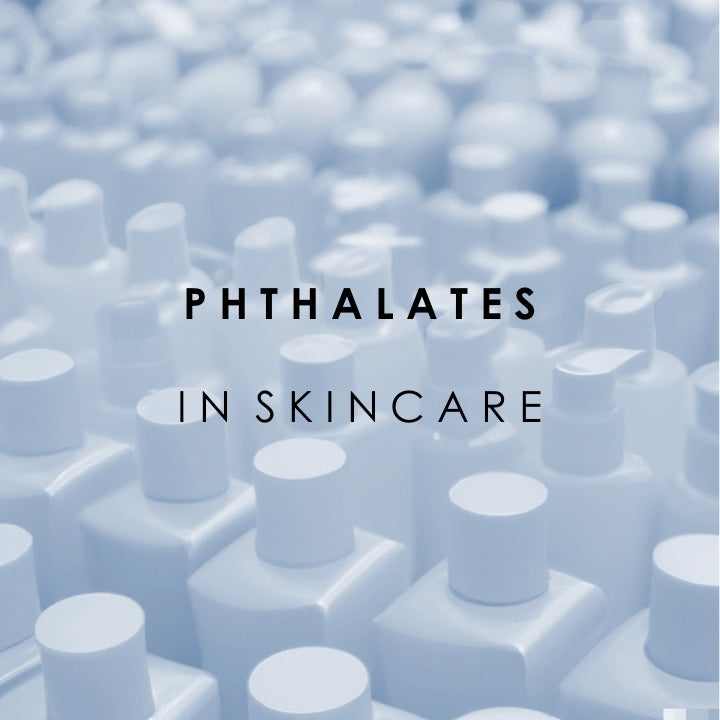Phthalates are a group of chemicals that are commonly used in personal care products.
They can be found in perfumes, lotion, hair products, cosmetics, as well as many other consumer products, including food packaging, feminine hygiene products, toys, and medical devices. When these products are discarded, phthalates can leach out into and contaminate the environment.
In addition to being a potential health risk, phthalates are also known to have endocrine disrupting effects. Endocrine disruptors are chemicals that can interfere with the body’s hormonal system, leading to adverse health effects.
Asthma, obesity and Cancer
Phthalates have been shown to disrupt the endocrine system by mimicking the activity of estrogen and interfering with the production and function of other hormones, such as testosterone. Studies have linked exposure to phthalates with a variety of health problems, including reproductive and developmental abnormalities, asthma, obesity, and cancer.
One study found that prenatal exposure to phthalates was associated with a reduced anogenital distance in male infants, which is a marker of fetal androgen exposure and a predictor of reproductive health outcomes. Another study found that exposure to phthalates in utero was associated with a higher risk of obesity in children.
While the exact mechanisms by which phthalates disrupt the endocrine system are not fully understood, it is clear that they can have significant effects on human health. As a result, regulatory bodies around the world have taken steps to limit the use of phthalates in consumer products.
In the European Union, for example, several phthalates have been banned or restricted in certain types of products, including toys and childcare articles. In the United States, several phthalates have been banned or restricted in children’s toys and childcare articles, but their use in other consumer products, such as personal care products, is still allowed.
The Environment
Phthalates are not only a concern for human health, but also for the environment. These chemicals are known to have a range of environmental effects, including aquatic toxicity and persistence in the environment.
Once phthalates are released into the environment, they can persist for long periods of time and have the potential to accumulate in the food chain. Studies have found that phthalates can accumulate in the tissues of fish and other aquatic organisms, leading to a range of adverse effects, including reproductive and developmental abnormalities.
In addition to their persistence in the environment, phthalates are also known to be toxic to aquatic organisms. Studies have shown that phthalates can interfere with the growth and development of aquatic organisms, as well as their ability to reproduce.
Given the potential environmental effects of phthalates, regulatory bodies around the world have taken steps to limit their use in consumer products. In the European Union, several phthalates have been banned or restricted in certain types of products, including toys and childcare articles. In the United States, several phthalates have been banned or restricted in children’s toys and childcare articles, but their use in other consumer products, such as personal care products, is still allowed.
Committed to safe and sustainable care products
In conclusion, phthalates are known to have a range of environmental effects, including aquatic toxicity and persistence in the environment. Once released into the environment, they can accumulate in the food chain and have adverse effects on aquatic organisms. Regulatory bodies around the world have taken steps to limit the use of phthalates in consumer products, but they are still present in many personal care products. At Vetted DermLab, we are committed to providing our customers with safe and sustainable personal care products that are free from harmful chemicals like phthalates.
A variety of diseases such as obesity, hypertension, reproductive system effects and endocrine disorders have been linked to phthalate exposure through the use of PCPs (Ferguson et al., 2017; Dodson et al., 2012; Kabir et al., 2015; Katsikantami et al., 2016; Amato et al., 2021; Deng et al., 2021)
Sources of phthalates
1) Plastic packaging
One of the most common sources of phthalates in personal care products is plastic packaging. Phthalates are often used as plasticizers, which help to make plastic more flexible and durable. They can be found in many types of plastic packaging, including bottles, tubes, and jars. To avoid phthalates, look for products that use alternative materials for their packaging, such as glass or metal. These materials are also more sustainable and environmentally friendly.
2) Fragrances
Phthalates are also commonly found in fragrances, which can be found in many personal care products, including perfumes, lotions, and shampoos. They are used as a solvent for the fragrance oil and as a fixative, which helps the fragrance last longer on the skin. You won't see phthalates on the label, as they are typically one of several components of a fragrance formulation. Option for fragrance-free products is the best way to ensure the formulation itself doesn't contain phthalates.
3) Other sources
Phthalates can also be found in other personal care products, such as nail polish and hair spray. In these products, phthalates are used as a plasticizer to help the product adhere to the nails or hair.
To avoid phthalates in these products, look for “3-free” or “5-free” nail polish, which means that they are free from a variety of harmful chemicals, including phthalates. For hair spray, look for products that are labeled as “phthalate-free” or that use alternative ingredients, such as vegetable glycerin.
Phthalates are of several known endocrine disrupting chemicals (EDC). EDCs can mimic or disrupt the activity of our hormones.
At Vetted DermLab, we are committed to providing our customers with safe and effective personal care products that are free from harmful chemicals like phthalates. In this blog article, we will explore the sources of phthalates in personal care products and what you can do to avoid them.
In conclusion, phthalates are a common ingredient in many personal care products, including plastic packaging and fragrances. However, they can pose a potential health risk and should be avoided whenever possible. At Vetted DermLab, we are committed to providing our customers with safe and effective personal care products that are free from harmful chemicals like phthalates. By being informed about the sources of phthalates in personal care products and taking steps to avoid them, you can help protect your health and the environment.
References:
-
Gore, A. C., Chappell, V. A., Fenton, S. E., Flaws, J. A., Nadal, A., Prins, G. S., ... & Zoeller, R. T. (2015). EDC-2: The Endocrine Society's second scientific statement on endocrine-disrupting chemicals. Endocrine Reviews, 36(6), E1-E150.
-
Martino-Andrade, A. J., & Chahoud, I. (2010). Reproductive toxicity of phthalate esters. Molecular Nutrition & Food Research, 54(1), 148-157.
-
Miodovnik, A., Engel, S. M., Zhu, C., Ye, X., Soorya, L. V., Silva, M. J., ... & Wolff, M. S. (2011). Endocrine disruptors and childhood social impairment. Neurotoxicology, 32(2), 261-267.
-
Swan, S. H. (2008). Environmental phthalate exposure in relation to reproductive outcomes and other health endpoints in humans. Environmental Research, 108(2), 177-184.
-
Trasande, L., Attina, T. M., & Blustein, J. (2015). Association between urinary phthalate metabolites and body mass index in children. Journal of Clinical Endocrinology & Metabolism, 100(6), 2120-2128.
-
Duty, S. M., Singh, N. P., Silva, M. J., Barr, D. B., Brock, J. W., Ryan, L., ... & Hauser, R. (2003). The relationship between environmental exposures to phthalates and DNA damage in human sperm using the neutral comet assay. Environmental Health Perspectives, 111(9), 1164-1169.
-
Hauser, R., & Calafat, A. M. (2005). Phthalates and human health. Occupational and Environmental Medicine, 62(11), 806-818.
-
Schettler, T. (2006). Human exposure to phthalates via consumer products. International Journal of Andrology, 29(1), 134-139.
-
Wormuth, M., Scheringer, M., Vollenweider, M., Hungerbühler, K., & Schmid, P. (2006). Environmental exposure assessment of phthalates in household products: the case of shower curtains. Environmental Science & Technology, 40(23), 7186-7192.
-
Zota, A. R., Calafat, A. M., & Woodruff, T. J. (2014). Temporal trends in phthalate exposures: findings from the National Health and Nutrition Examination Survey, 2001-2010. Environmental Health Perspectives, 122(3), 235-241.

